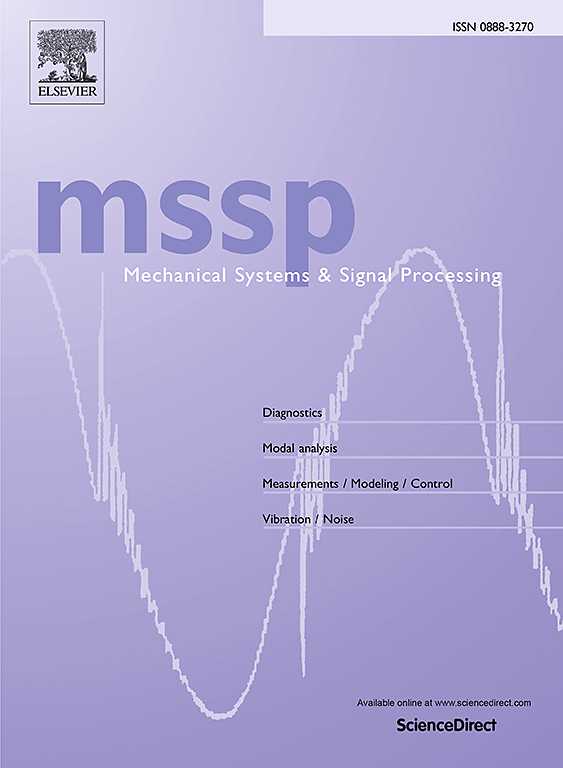Reweighted periodic overlapping group lasso for impulsive feature extraction and its application to spiral bevel gear local fault diagnosis
IF 7.9
1区 工程技术
Q1 ENGINEERING, MECHANICAL
引用次数: 0
Abstract
Gear localized faults, such as pitting, spalling and crack, are one of the most common fault manifestations for spiral bevel gear (SBG). However, it is a challenge to extract the fault information submerged in the intensive background noise. To address this issue, a novel reweighted periodic overlapping group lasso (Re-POGL) method for SBG fault diagnosis is proposed in this study. The algorithm utilizes the sparsity within and across groups (SWAG) of the impulsive feature of SBG faults to construct penalty term. An exponential nonconvex penalty function is chosen for SWAG to enhance the sparsity. Moreover, a reweighted coefficient is formed based on the −norm of the periodic groups to enhance the amplitude of reconstructed fault characteristic signal. By virtue of SWAG and nonconvex regularizer, the Re-POGL model is established. The convex condition is proved to ensure that the objective function remains convex even with nonconvex penalty terms. The majorization-minimization (MM) is used to derive the solution of the proposed model. Additionally, the setting strategy of the regularization parameters is also provided. Finally, the performance of Re-POGL is validated by numerical simulations and the diagnosis experiments of SBGs. The results indicate that the impulsive fault characteristic can be extracted plainly and the amplitude of the fault impulses is enhanced.
求助全文
约1分钟内获得全文
求助全文
来源期刊

Mechanical Systems and Signal Processing
工程技术-工程:机械
CiteScore
14.80
自引率
13.10%
发文量
1183
审稿时长
5.4 months
期刊介绍:
Journal Name: Mechanical Systems and Signal Processing (MSSP)
Interdisciplinary Focus:
Mechanical, Aerospace, and Civil Engineering
Purpose:Reporting scientific advancements of the highest quality
Arising from new techniques in sensing, instrumentation, signal processing, modelling, and control of dynamic systems
 求助内容:
求助内容: 应助结果提醒方式:
应助结果提醒方式:


